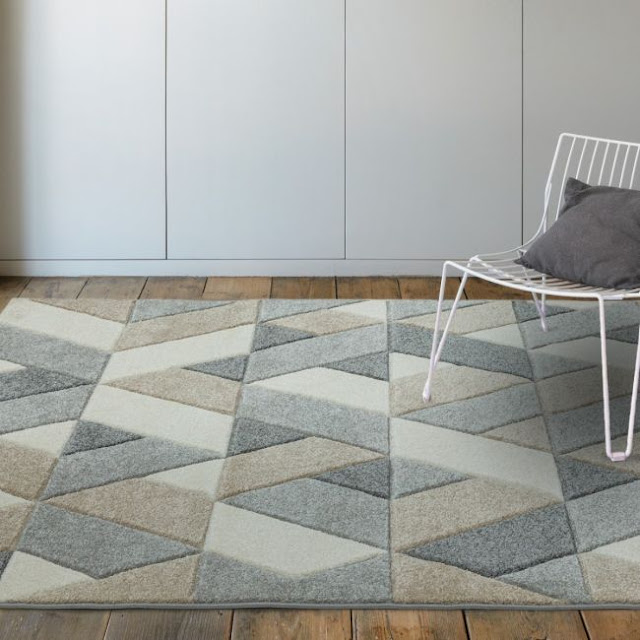Selecting the
ideal rug is essential since it serves as the room's foundation and anchors the
furnishings. In addition to safeguarding your flooring, it also offers coziness
and warmth and is a wonderful way to add colour and bestow a creative
statement. When buying area rugs
for the first time, it can be easy to feel intimidated by the abundance of
choices and high price tags that many of them come with. Style, placement, and
cost are the three key considerations when selecting a rug. Consider the rug's
ease of cleaning, how long you plan to keep it, and whether you have a
preference for particular types of materials.
Ø Wool
Imagine a rug
that is as luxurious and comfortable as your go-to pullover. You may lounge
barefoot anywhere in your house thanks to the luxuriously soft pile of wool.
Wool's dense fibers are crush-resistant, so even in a home with boisterous
young kids and pets, they will recover over time.
Rugs made of
wool are often hand-tufted, hand-loomed, hand-woven, or hand-knotted. There are
wool rugs
that are power-loomed, although they are usually constructed from synthetic
fibers rather than actual wool. Due to the substantial work involved in
creating and designing them, true wool rugs are more expensive but have
exceptional quality. Wool is quite a long-lasting and popular material used in
the making of rugs. It is robust while remaining wonderfully comfortable and
luxurious, making it a good choice for a high-traffic space like a dining room
or living room.
Ø Jute and
Sisal
Both sisal
and jute are strong, elegant rug types. Their thick, braided piles give bare
feet the sensation of getting massaged. Although appealing, the prickly feel is
not suitable for playing with children or just lounging. The sandy,
gritty knots can be snagged by cat claws and high heels. These organic
weave rugs are healthier for your family because they are less prone to hold
allergens due to the rope-like layout.
The most
popular natural fiber rugs are made of sisal, jute, and seagrass, and they are
available in a range of sizes and forms to fit different rooms. Seagrass and
sisal rugs frequently have a cotton border around them to avoid fraying because
they do have a tendency to shed.
Ø Cotton
As a less
expensive option to more expensive rugs made of silk or wool, cotton is an
affordable rug material. Don't expect your cotton rug to survive for decades
though, as cotton has a tendency to fade quickly and is not stain-resistant.
Cotton rugs work well in informal settings and are a wonderful choice if you
want to switch up your rug according to the season or your mood.
Ø Polypropylene
Although it costs
less, polypropylene is exactly as luxurious and dense as wool. A polypropylene rug is not your typical
dishrag, despite being simple to clean, water-resistant, and incredibly strong.
It's a wise choice for a rug for a modern household that experiences heavy
traffic or hosts guests frequently. Polypropylene offers a fuzzy, blanket-soft
vibe that resembles wool's luxurious fibers, yet it's strong enough that it can
be used to create a cozy atmosphere outdoors as well.
Many rugs
sold nowadays are made of synthetic materials like polyester, polypropylene,
nylon, or viscose. While most of these rugs are thinner than wool rugs, some
nevertheless have a velvety feel to them. The key selling point is the cost;
they are quite reasonable, making frequent rug replacements feasible.
Additionally, synthetic blend and polypropylene rugs have the advantage of
being fade-resistant and simple to clean, making them perfect for high-traffic
areas like dining rooms, foyers, and kid's rooms. They also make excellent indoor/outdoor
rug materials.
Ø Polyester
Polyester is
soft and stain-resistant, making it a good choice if you're looking for rug
material for morning exercise. You may enjoy the benefits of polyester rugs
while ignoring coffee and juice spills. Additionally, polyester rugs resist
fading, so they maintain their vibrant appearance for a longer time. A
polyester rug can also be placed by the backdoor to stop snow from being
tracked in or to provide a spot for your pet to use after a long
walk.
Since
synthetic-rugs are frequently affordable, they're perfect for adding a quick
splash of color without making a significant investment. However, because their
smooth threads can't collect dirt, synthetic fiber rugs frequently seem dirtier
faster than genuine wool rugs or other natural fiber rugs. Additionally,
because synthetic fibers are made from petroleum, they aren't always the best
choice for people who have young children crawling around on the floor or those
who are environmentally friendly.
Ø Silk
Silk rugs are
exquisite and lovely, offering graceful suppleness and an opulent sheen. Silk
is incredibly decorative and delicate, so you'll want to flaunt it. However,
low-traffic locations are where it works best. A pure silk rug needs a little
more maintenance than other rug materials due to its shine. Silk and wool rug
fibers combined can provide the same dramatic appearance of silk with simple
upkeep and greater durability. A silk rug, which is nothing short of wonderful,
will assist you in giving your home a chic, designer appeal. Silk rugs can be
quite hard to maintain and are extremely delicate, hence these rugs are best
for low-traffic areas of your house.










0 Comments